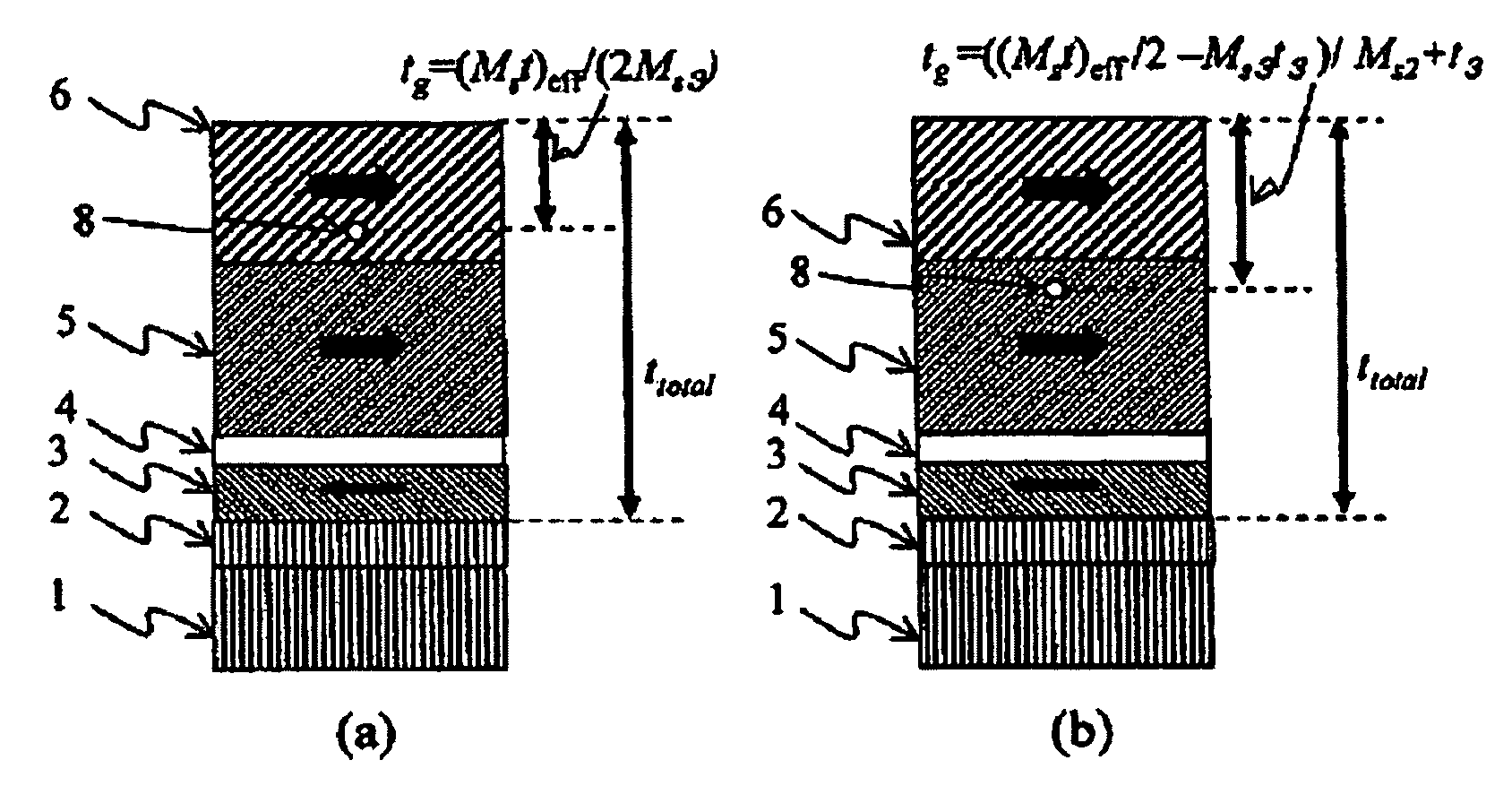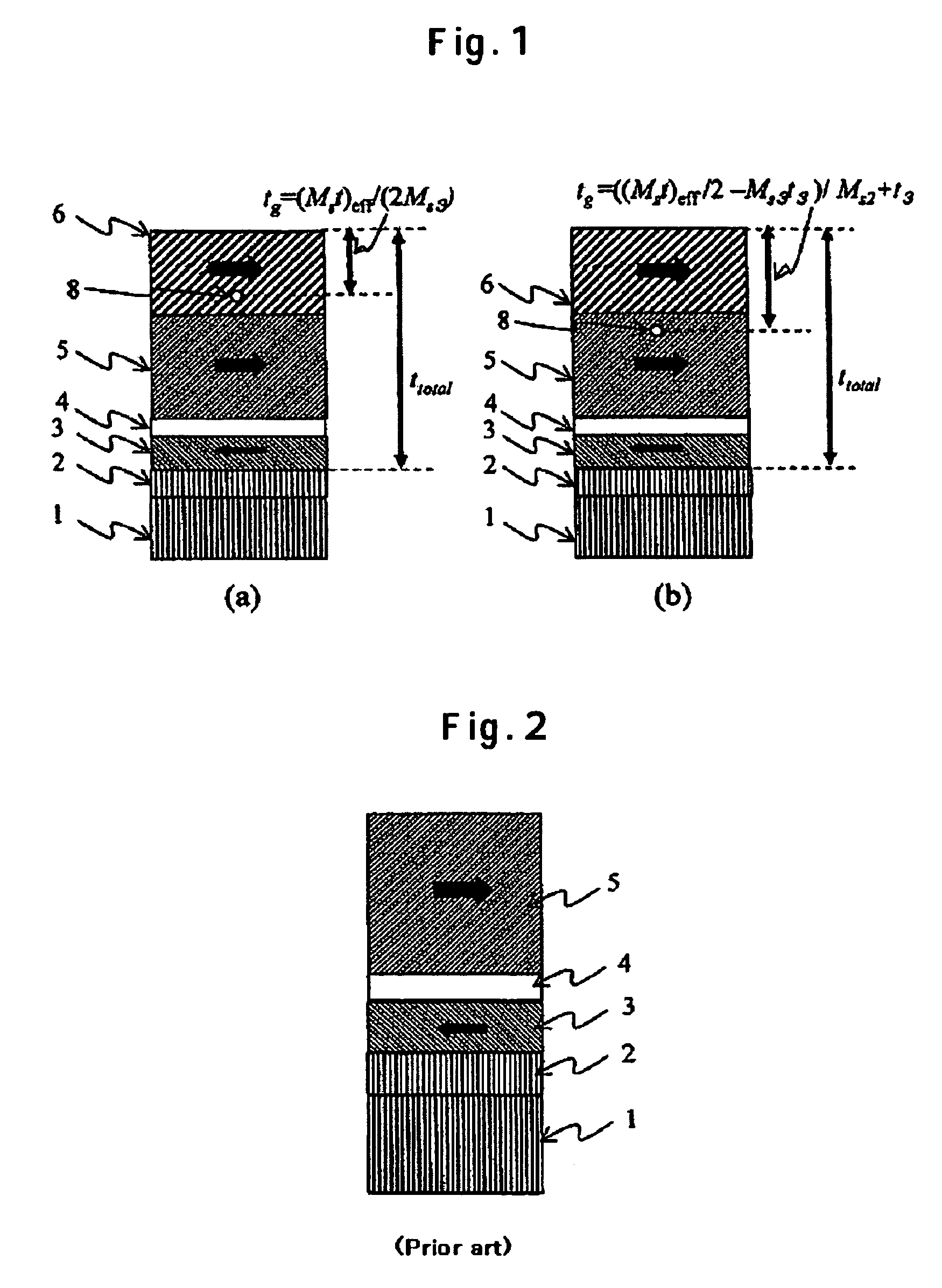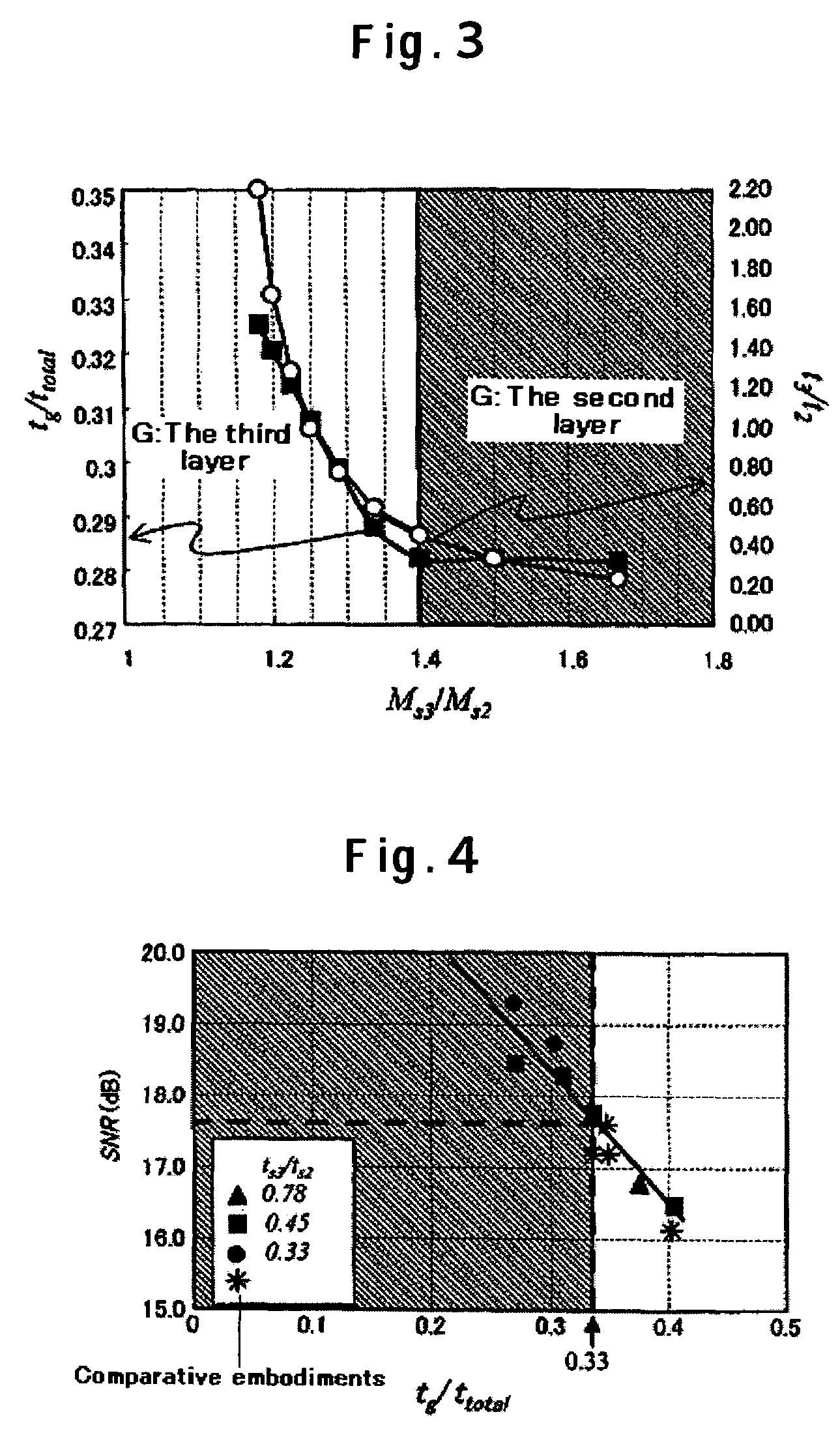Magnetic recording media with ultra-high recording density
a recording media and ultra-high technology, applied in the field of magnetic recording media, can solve the problems of difficult to achieve higher recording density, medium with large k/sub>u cannot be recorded by a magnetic head, and magnetization might decay, etc., to achieve thermal stability and reduce noise
- Summary
- Abstract
- Description
- Claims
- Application Information
AI Technical Summary
Benefits of technology
Problems solved by technology
Method used
Image
Examples
first embodiment
[0042]A second magnetic layer was formed by 9 nm with the composition of Co−22 at % Cr−13 at % Pt−6 at % B, and a third magnetic layer was formed by 7 nm with the composition of Co−10 at % Cr−14 at % Pt−8 at % B. A medium with the second and third layers respectively used as recording layers (layer thickness of 15 nm) was prepared, and the saturation magnetization was measured for the respective layers. As for a measurement method, a method for detecting an A.C. field generated by vibrating measurement specimen (VSM measurement) or an optical method using a phenomenon of inclination of the polarization angle of reflected light in response to the magnetization quantity (Kerr effect) can be used. In the present measurement, the measurement method by Kerr effect was used. The saturation magnetization of a medium with the composition of Co−22 at % Cr−13 at % Pt−6 at % B was 0.25 T, and the saturation magnetization of a medium with the composition of Co−10 at % Cr−14 at % Pt−8 at % B was...
second embodiment
[0043]A second magnetic layer was formed by 9 nm with the composition of Co−21 at % Cr−12 at % Pt−8 at % B, and a third magnetic layer was formed by 7 nm with the composition of Co−12 at % Cr−14 at % Pt−12 at % B. A medium with the second and third layers respectively used as recording layers (layer thickness of 15 nm) was prepared, and the saturation magnetization was measured. The saturation magnetization of a medium with the composition of Co−21 at % Cr−12 at % Pt−8 at % B was 0.33 T, and the saturation magnetization of a medium with the composition of Co−12 at % Cr−14 at % Pt−12 at % B was 0.58 T. The center of gravity was at the third layer, and tg / ttotal was calculated to be 0.26.
third embodiment
[0044]A second magnetic layer was formed by 11 nm with the composition of Co−18 at % Cr−12 at % Pt−8 at % B, and a third magnetic layer was formed by 5 nm with the composition of Co−12 at % Cr−13 at % Pt−12 at % B. A medium with the second and third layers respectively used as recording layers (layer thickness of 15 nm) was prepared, and the saturation magnetization was measured. The saturation magnetization of a medium with the composition of Co−18 at % Cr−12 at % Pt−8 at % B was 0.39 T, and the saturation magnetization of a medium with the composition of Co−12 at % Cr−13 at % Pt−12 at % B was 0.55 T. The center of gravity was at the second layer, and tg / ttotal was calculated to be 0.28.
PUM
| Property | Measurement | Unit |
|---|---|---|
| grain size | aaaaa | aaaaa |
| thickness | aaaaa | aaaaa |
| thickness | aaaaa | aaaaa |
Abstract
Description
Claims
Application Information
 Login to View More
Login to View More - R&D
- Intellectual Property
- Life Sciences
- Materials
- Tech Scout
- Unparalleled Data Quality
- Higher Quality Content
- 60% Fewer Hallucinations
Browse by: Latest US Patents, China's latest patents, Technical Efficacy Thesaurus, Application Domain, Technology Topic, Popular Technical Reports.
© 2025 PatSnap. All rights reserved.Legal|Privacy policy|Modern Slavery Act Transparency Statement|Sitemap|About US| Contact US: help@patsnap.com



